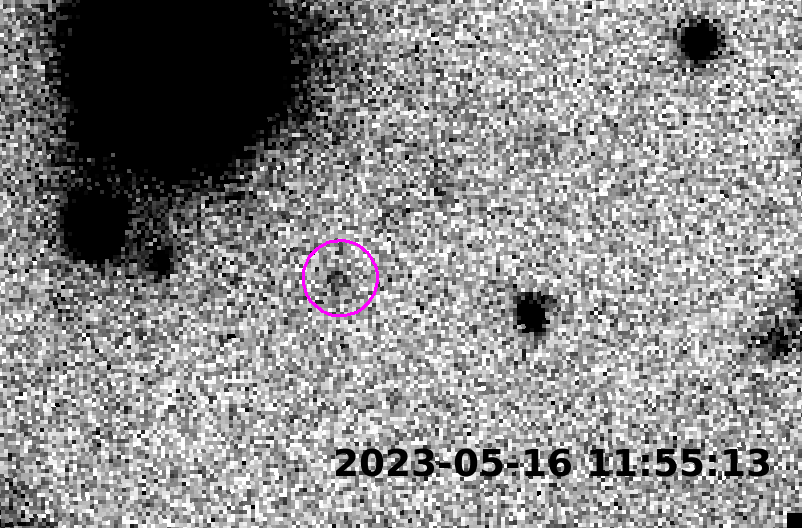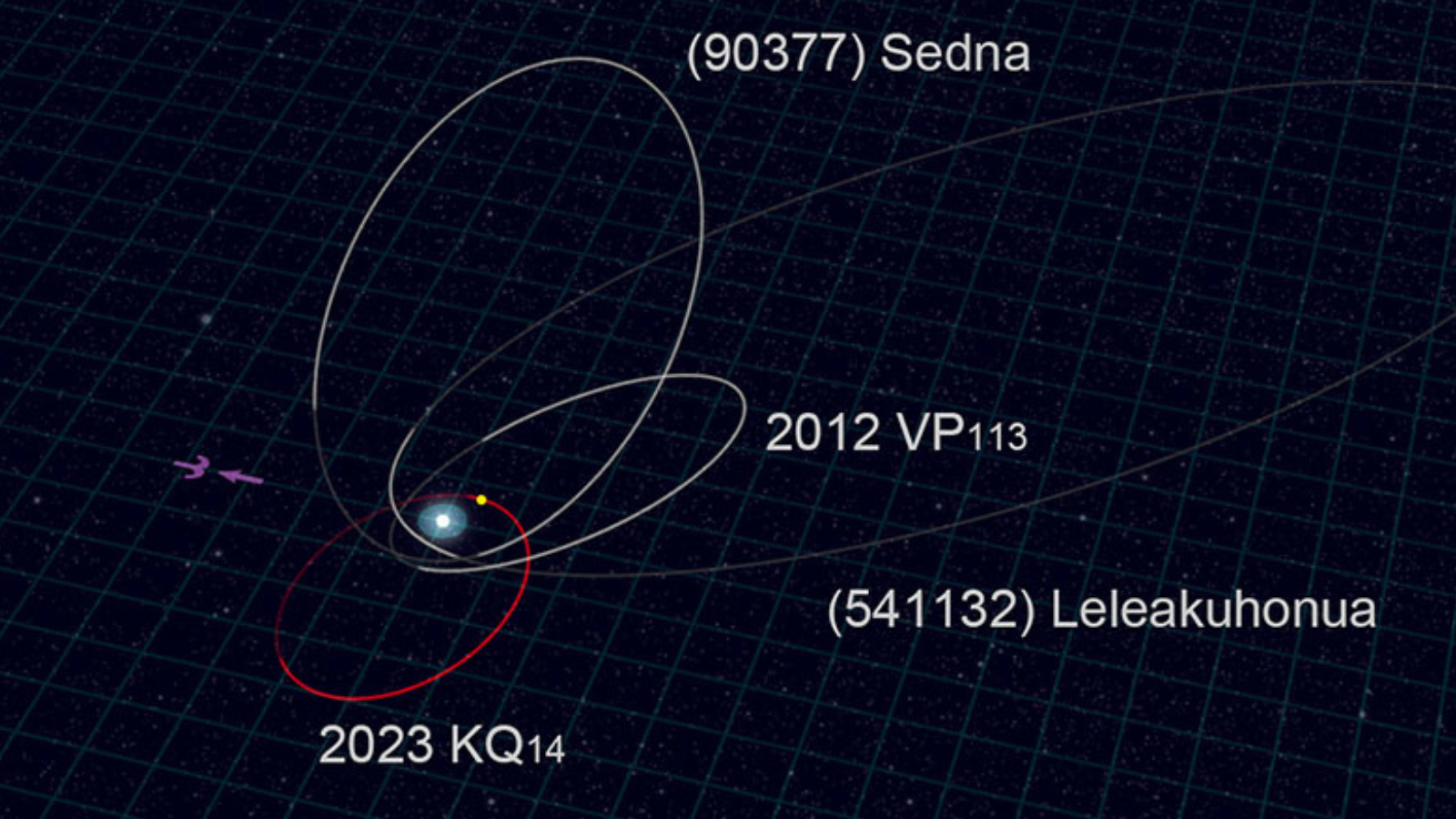Astronomers discover a cosmic ‘fossil’ beyond Pluto, challenging Planet Nine theories
In a discovery that could reshape our understanding of the solar system’s farthest reaches, astronomers discover a cosmic ‘fossil’ orbiting beyond Pluto an icy, mysterious object named 2023 KQ14, nicknamed “Ammonite.” Unlike most known solar system objects, this body doesn’t follow the expected path, and its unusual orbit could hint at dramatic events that occurred billions of years ago.
Astronomers discover a cosmic ‘fossil’ that defies known patterns
Astronomers discover a cosmic ‘fossil’ -The newly found sednoid a rare type of trans-Neptunian object with an elongated, eccentric orbit has stunned astronomers with its strange path around the sun. Estimated to be between 220 and 380 kilometers wide, Ammonite comes no closer to the sun than 71 times the distance from Earth to the sun. That’s nearly three times farther than Pluto at its closest point.
This object is just the fourth known sednoid, a class of celestial bodies believed to be leftover relics from the earliest days of the solar system. But what sets 2023 KQ14 apart is its highly unique orbit, unlike those of its three known counterparts. That difference has astronomers reevaluating long-standing theories, especially those concerning the elusive “Planet Nine.”
What makes this cosmic fossil so unusual
Astronomers discover a cosmic ‘fossil’-Using data collected from the Subaru Telescope in Hawaii as part of the Formation of the Outer Solar System: An Icy Legacy (FOSSIL) survey, scientists observed that Ammonite’s orbit has remained stable for approximately 4.5 billion years. Yet, computer simulations suggest that all four sednoids likely shared similar orbits around 4.2 billion years ago.
So what changed?
Researchers believe something massive happened roughly 400 million years after the birth of the solar system possibly the close passage of another large object or a now-ejected planet. This could explain how 2023 KQ14 ended up on a different trajectory, breaking away from its siblings.
The discovery adds more complexity to the Planet Nine debate. While the theory suggests that an unseen giant planet is pulling objects into eccentric orbits, Ammonite’s misalignment might indicate that such a planet was once there but is now long gone or never existed at all.
A quiet witness to a violent past
The location of 2023 KQ14 lies in a zone where Neptune’s gravity has little influence, which makes it all the more fascinating. Objects in this area are harder to detect due to their distance and dimness, and only powerful telescopes like Subaru can observe them.

Astronomers believe 2023 KQ14 formed in the solar system’s infancy, possibly during the same period that the planets were taking shape around the newborn sun. Its survival on such a distant and stable orbit for billions of years paints a picture of a silent witness one that may hold the secrets of past chaos, collisions, or planetary ejections.
To better understand this sednoid’s history, researchers ran detailed simulations using high-powered computing clusters. These models confirmed that 2023 KQ14 has not only endured over time but has also kept its distinct orbital pattern intact, possibly shielding clues about long-lost cosmic events. Also Read: NASA TRACERS Set to Transform Space Weather Understanding With Powerful New Tech
Conclusion:
This rare cosmic fossil has cracked open new possibilities in space science. While it complicates the search for Planet Nine, it offers deeper insight into how dynamic and mysterious the early solar system truly was. As astronomers continue to explore the cold, dark edges of our planetary neighborhood, discoveries like 2023 KQ14 remind us how much remains unknown and how every tiny clue could reshape the story of our cosmic origins.


